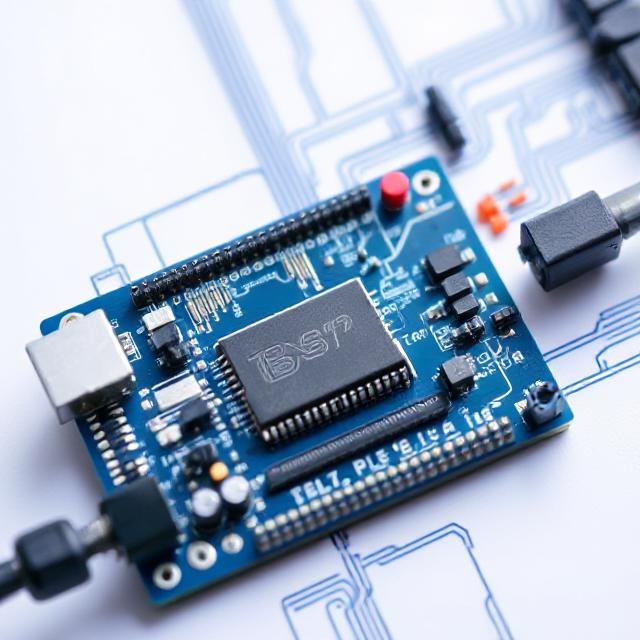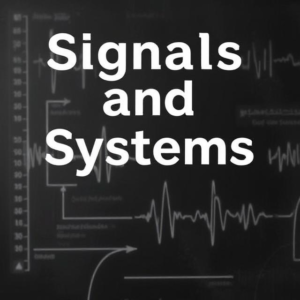1. What Does Non-Linear Mean?
In general, a non-linear system is one where the output is not directly proportional to the input. In simpler terms, when you change the input (like voltage or current) in a non-linear system, the output (like current or voltage) doesn’t just change in a straight line.
For example:
- In a linear circuit, if you double the voltage, the current doubles.
- In a non-linear circuit, if you double the voltage, the current might not double. It could increase more or less, or even behave in a completely different way.
Non-linear circuits involve components whose behavior doesn’t follow a straight line, such as diodes, transistors, and LEDs.

2. Why Do Non-Linear Circuits Matter?
Non-linear circuits are important because many real-world devices and systems, like amplifiers, oscillators, and radio transmitters, require non-linear behavior to function properly. These circuits are used in:
- Audio systems (for amplifying sound)
- Signal processing (for handling complex signals)
- Communication systems (like radios or cell phones)
- Power electronics (like power supplies)
3. What is Non-Linear Circuit Design?
Non-linear circuit design involves designing circuits that include non-linear components. Unlike linear circuits (where Ohm’s Law applies straightforwardly), non-linear circuits need more complex methods to analyze and design.
Non-linear components do not obey simple relationships like V = IR (Ohm’s Law), so they require specialized techniques to design and predict their behavior.
4. Non-Linear Components in Circuits
Here are some common non-linear components you’ll find in circuits:
a. Diodes:
- Diodes allow current to flow in only one direction. The relationship between the voltage across a diode and the current flowing through it is non-linear.
- Example: If you apply a small voltage, almost no current flows. Once the voltage reaches a certain level (called the threshold voltage), the current increases dramatically.
b. Transistors:
- Transistors are used for switching or amplifying signals. The relationship between the current that flows through the transistor and the voltage across it is non-linear.
- Example: In a transistor amplifier, a small input signal can control a much larger output signal, but the relationship between the input and output is not a straight line.
c. LEDs (Light Emitting Diodes):
- LEDs are a type of diode that emits light when current flows through them. Like regular diodes, they have a non-linear voltage-current relationship.
- Example: A small increase in voltage across an LED can cause a large increase in the current flowing through it, which in turn makes it glow brighter.
5. How Do You Analyze Non-Linear Circuits?
Analyzing non-linear circuits is more complex than linear circuits because there’s no simple formula to describe their behavior. However, there are several methods used to study non-linear circuits:
a. Graphical Methods:
- You can plot the voltage-current (V-I) characteristics of non-linear components like diodes and transistors. This helps you understand how the component behaves at different input voltages or currents.
b. Piecewise Linear Approximation:
- In some cases, you can approximate a non-linear component by breaking it into several small linear sections. This is known as piecewise linear modeling, and it simplifies the analysis.
c. Numerical Methods:
- For more complex circuits, engineers often use computers and simulation software (like SPICE) to simulate and solve non-linear circuits. These tools can handle the complex math involved.
d. Small-Signal Analysis:
- For circuits that operate around a particular operating point, you can use small-signal analysis. This involves linearizing the non-linear components around a chosen operating point and analyzing how small changes in input affect the output.
6. Non-Linear Circuit Applications
a. Amplifiers:
- Non-linear circuits are used to build amplifiers that increase the power of a signal. In audio systems, for example, audio amplifiers use non-linear components (like transistors) to make quiet sounds louder.
b. Mixers:
- In radio communications, non-linear circuits like mixers are used to combine signals at different frequencies. This process is essential for things like creating AM and FM radio signals.
c. Oscillators:
- Oscillators create periodic waveforms (like sine waves or square waves) used in clocks, radio transmitters, and other systems. These circuits often involve non-linear components that help them “start” oscillating.
d. Signal Processing:
- Non-linear circuits are used in signal processing tasks such as filtering, modulation, and compression. For example, in audio and video equipment, non-linear circuits can shape or distort signals to achieve a desired effect.
7. Designing Non-Linear Circuits
When designing a non-linear circuit, you need to:
- Choose the Right Components: Select non-linear components (like diodes, transistors, or LEDs) based on the desired behavior of your circuit.
- Consider the Operating Points: For transistors, diodes, and other non-linear components, it’s important to define the operating point where the circuit will function best. This is the voltage or current where the component behaves in a predictable way.
- Use Simulation: Since non-linear behavior can be complex, most engineers use simulation tools to test their designs before building them. These tools allow you to see how the circuit will behave under real-world conditions.
- Account for Distortion: Non-linear circuits can introduce distortion (unwanted changes in the signal). In some cases, distortion is useful (like in guitar pedals), but in other cases, it needs to be minimized.
8. Conclusion
To sum it up:
- Non-linear circuits involve components whose behavior doesn’t follow a straight line. These circuits are essential for many real-world applications, like amplifiers, oscillators, and signal mixers.
- Components like diodes, transistors, and LEDs exhibit non-linear behavior and are the building blocks of non-linear circuit design.
- Analyzing non-linear circuits is more complex than linear ones, but engineers use tools like graphical methods, simulation software, and small-signal analysis to design and optimize these circuits.
Non-linear circuit design is crucial for building devices that require more advanced behavior, such as audio equipment, communication systems, and power electronics.











